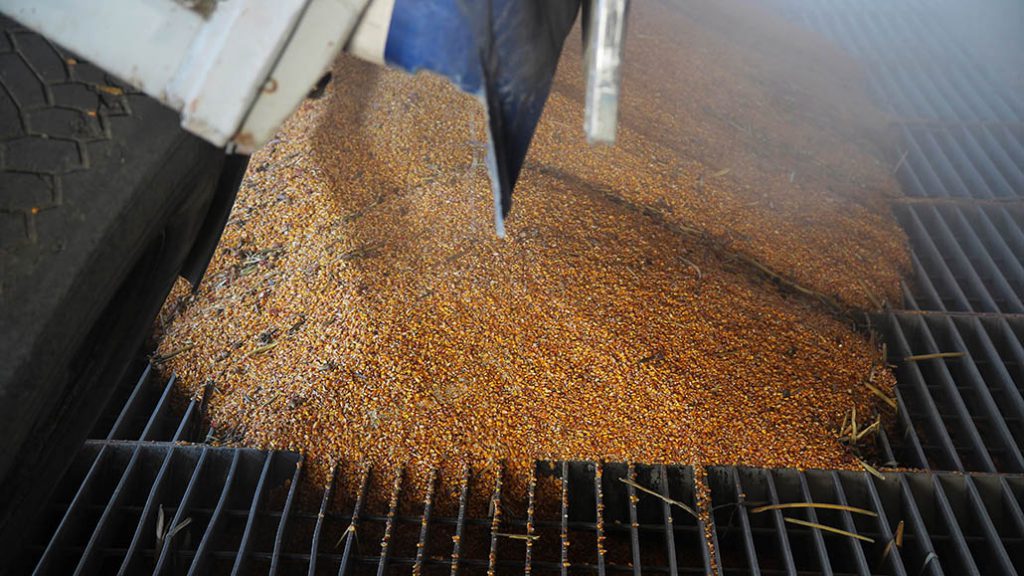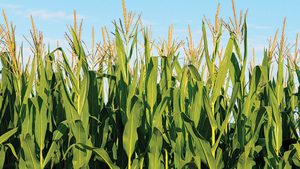Grain grading
UNDERSTANDING HOW YOUR GRAIN IS INSPECTED

GRAIN GRADING AFFECTS the price of your grain; and when you don’t get the price you were expecting, you might wonder what factors were at play.
Every grain has its own set of inspection guidelines as set out by the Canadian Grain Commission in the Canadian Grain Grading Guide. It covers everything from determining if the grain is commercially clean, specifications for testing equipment, and how to determine dockage. Many farmers don’t know all the guidelines, and that’s why Grain Farmers of Ontario hosted a webinar in July to help explain the process.
DON SAMPLE TESTINGA Mycotoxin Research Coalition, which includes Grain Farmers of Ontario, the Ontario Ministry of Agriculture, Food and Rural Affairs, and the Ontario Agri-Business Association, was established in response to the increased levels of DON in the 2018 corn crop. A primary initiative of this coalition is research led by Dr. Art Schaafsma, University of Guelph Ridgetown Campus, on sample testing protocols. With the cooperation of Ontario elevator operators, Schaafsma investigated the sources of variation in sampling and testing. The key sources of variability were determined to be subsampling and the grinding process (how much is ground). Schaafsma has recommended that on-site standardized training be developed, that a two-step grinding process be utilized, and other standardized procedures be developed. Further research has been conducted on these procedures and an updated report is expected this summer. Please check www.ontariograinfarmer.ca for updates on this research as it becomes available. |
“There has been a lot of interest expressed by our farmer-members on wanting to gain a better understanding of how the grading system works and the factors that go into grading. While either looking at a sample of their crop or looking at their weigh tickets our farmer-members want to gain a better understanding of why their crop is down graded,” says Crosby Devitt, vice president of strategic development at Grain Farmers of Ontario. “We wanted to provide the opportunity to allow our farmer-members to hear from a certified grain inspector the factors that are used in grading and things to look out for that could cause a down grade.”
The webinar, which focused on grading for corn, soybeans, and wheat, was led by Jessica McClure, a grain inspector with SGS Canada Inc. SGS acts as a third-party inspector for elevators and terminals to ensure grain quality. Some elevators may use their own inspection protocols, but SGS inspectors utilize the Canadian Grain Commission standards when replicating tests.
TESTING PROTOCOLS
McClure notes that accurate grading, for any crop, begins with the sample process.
“You need to make sure your load of grain is being probed in a proper manner, that they aren’t probing all in one spot, so it represents the whole load and not just a certain part.”
Of particular concern is that dockage can sit in the middle of a load or fall to the side.
As long as the samples are being taken properly there isn’t a better or worse method to use, it’s when a person isn’t following the proper testing protocols that a particular sampling method starts to be less effective,” explains McClure.
She says any type of sampling, probe or manual, can be inconsistent because if multiple areas aren’t sampled, it isn’t truly representative of the load.
You should also check if the sample testing area and the equipment used is clean and well lit. If equipment isn’t properly maintained or cleaned, results of your grain sample can be contaminated by previous tests.
CORN
When looking at how specific crops are graded, the Canadian Grain Grading Guide outlines the tolerable level of damage and foreign material. In corn, heated kernels, which can occur during drying or storage, can become a big issue. For a number two corn, if just 0.2 per cent shows heated damage, it will be downgraded. Blue eyed mould also has a significant impact on grading because it can lead to sprouting.
Test weight is the most common reason corn is downgraded. Other grading factors include odour, rotted kernels, and whether the shipment has been contaminated by excrement from any animal.
Vomitoxin is another quality factor that farmer-members should be looking for. Vomitoxin can be generated from several factors but one of the most common factors in Ontario is from corn ear rots, specifically Gibberella Ear Rot. Gibberella Ear Rot typically develops as white to pink mould covering the ear tip to the upper half of the ear. However, infections may also occur at the base of the ear, causing the whitish-pink diseased kernels to develop from the base of the ear upwards.
While vomitoxin is a large quality factor, it is currently not an official grading factor under the Canadian Grain Commission and therefore discount schedules are set by individual grain elevators.
SOYBEANS
Immature soybeans, sprouting, and insect damage can affect the grade given to a shipment of soybeans.
“If there are a lot of splits in a sample of soybeans they will downgrade the shipment,” says McClure. “If the elevator will need to clean out the splits before exporting the soybeans, they are compensating for the amount they will be losing.”
McClure also notes that a visual inspection for foreign material that can’t be cleaned out will also be used during the sampling process. A visual inspection is also used to assess the colour for IP beans, which is important for export markets.
WHEAT
In wheat, the grading tests relate to the needs of the end user (such as millers).
“Sprouts in wheat affect the falling number and millers want to have a fairly stable falling number around 250. The more sprouts there are, the lower the falling number is,” explains McClure. “A visual inspection is used to assess sprouts, when the bran is cracked you can see growth coming out.”
Along with sprout, McClure says most elevators will also downgrade for mildew and Fusarium.
With the cool wet spring Ontario received this year, the wheat crop is more susceptible to Fusarium. Fusarium-damaged wheat is typically characterized by thin or shrunken chalk-like kernels that have a white or pinkish mould or fibrous growth. For Canadian Eastern Soft Red Winter Wheat, Grade 1 and Grade 2 samples can be downgraded if more then 1% Fusarium damage is present. For Grade 3, downgrades can occur if more then 1.5% of Fusarium damage is present. For Canadian Eastern White Winter Wheat, the standards are even stricter with Grades 1 – 3 being downgraded if more than 1% of Fusarium damage is present.
INCREASED AWARENESS
“Farmer-members are encouraged to get a sense of what the quality of their crop is prior to delivery. This will allow you to gain a better understanding of the quality of your crop and provide you with more information prior to unloading,” says Devitt. “Representative samples should be taken and can be sent to your local elevator to perform the test or to a third-party company such as SGS Canada. It is recommended that a minimum 1 kg sample be provided.”
If farmers don’t agree with the grade their crop has been given at an elevator, they can ask elevators to perform a second test. Samples can also be sent to a third party for independent testing to occur.
“We want our members to feel confident in knowing how their grain is being graded. Their livelihoods depend on what grade is given and the difference between a Grade 2 and Grade 3, or Grade 3 and Feed, can mean thousands of dollars,” says Devitt.
Farmer-members who are interested in learning more about grading for oats and barley can contact Mel Reekie, Grain Farmers of Ontario’s manager of member relations, at mreekie@gfo.ca or 226-979-5581.
A recording of the grain grading webinar can be accessed online at: www.gfo.ca/GrainTALK. •



























